Service Providers, Advertisers Have to Pay Closer Attention
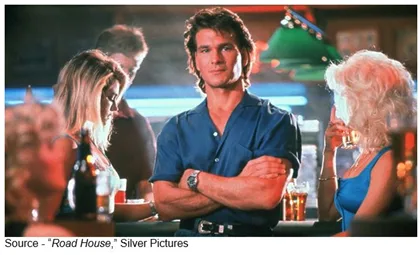
Remember the “good ole days?”
You’d come home from a rough day at work, grab a beverage, walk over and turn on the TV, sit in your chair and watch whatever.
Today, we’re suffering from a glut of entertainment:
- POT (plain old TV) – cable networks with scheduled shows, scheduled channels
- Dizzying array of SVOD, TVOD, AVOD (subscription, transaction, advertising video on demand) services including Netflix, Vimeo, Amazon Prime, DramaFever NowTV, iflix, HOOQ, Maxdrone, Hotstar, Virgin Media, TV apps, Sky, Rogers and others
- Semi, sorta’, kinda’ free stuff – YouTube, Facebook Video, Smartchat, Baidu, 360 Search, Kafuta, GoBATLA, Khoj, Instagram, etc.
- TV set, computer, tablet, smartphone viewing
Tens of thousands of hours are shot, produced and stored every day; just waiting for people to consume on their screen of choice.
What could possibly be wrong with this overabundance?
Darn near everything!
Traditional TV viewing is down as people shift to the new alternatives that are out there.
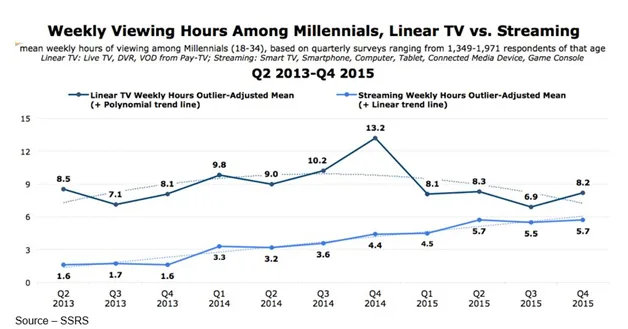
Millennials and GenZers (sweet spots for advertisers) are watching less traditional TV. Industry analysts say they are continuing to view content but from digital sources. The trend is most apparent among the younger crowd:
- Deloitte found 19- to 25-year-olds spend 39 percent of their TV time watching streaming, as opposed to 29 percent watching live
- Defy Media found that 13- to 24-year-olds are spending more time with “free” and subscription digital video
Sure, traditional TV is still the first place most people go for their video, but eyeballs – especially younger eyeballs – are catching their stuff elsewhere.
And where they go … advertisers go.
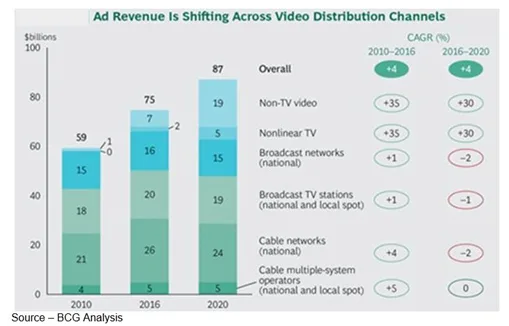
It doesn’t really matter that digital advertising outpaces inflation 5:1 and, according to a recent Adobe study, the costs are climbing faster than conventional TV ads.
BAM!!! They’re there.
Remember, we’re talking about precise viewer selection. You know, all your facts, figures, places visited, things done … everything.
It’s so good that the IAB (Interactive Advertising Bureau) reported that online ad spending will surpass TV spending this year.

And Page and Zuck want to thank the advertisers.
The most popular ads?

Native. They sorta’, kinda’ look like editorial or news/educational/informational video but they’re usually so blatantly obvious that only the ad writer or approver would think it was educational, informational, entertaining.
That didn’t bother the advertisers; nor did “little things” like fraudulent ad clicks and erroneous measurement because, well, because.
But when the ads started showing up among anti-Semitic messages and other obnoxious stuff (porn, hate crime, fanatic advocation, sicko/weird content) they got a little worried.
So, advertisers said “Dude, when you fix this we’ll come back; but for time being, we’re outta’ here and sure wish Netflix and Amazon Prime would take our ads.”
They won’t and their growing subscriber base is willing to pay for the privilege of avoiding bad ad free content.
Sure, the social guys/gals will take care of it because we’re talking about serious money that can be reaped from a virtual space. They’ve opened up (a little) by letting third-party auditors check to see if the ad was really seen and how long.
And right now, they’re building tools that let the advertisers control the ad placements … their tools, their space.
Cool!
My kid and his band of marauders solved the problem. They installed ad blockers.
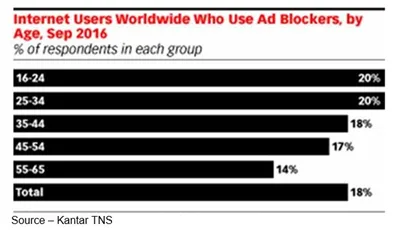
They put them on their computers, tablets and smartphones.
Since they do everything on the smartphone, the addition hurts content and ad folks because it means a wasted opportunity to convince them to buy something.
The ad blockers are readily available free and at minimal cost almost everywhere.
Oh, almost everywhere but from Google … don’t ask.
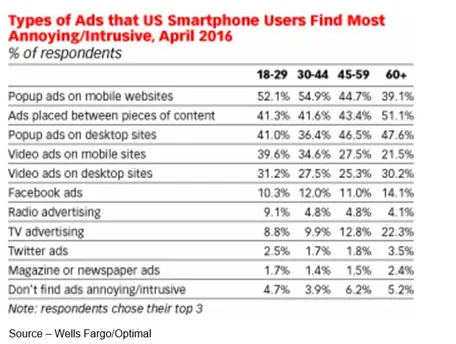
Of course, there’s a reason to use them.
Ads are in your face on your phone, really in your face.
They’re gross.
They’re bad, so it’s easier to say “I hate ads,” but they don’t really.
They “highly dislike” ads that are simply bad or aren’t personally relevant.
They’re also overexposed to ads and to clean up their lives, it’s easier to install an ad blocker.
The IAB found that people block ads because they are interruptive, annoying, they slow down web-browsing, they are irrelevant and/or there are privacy concerns.
Ooyala, a leading content delivery/analytics firm, found 67 percent of folks stopped watching content because:
- 73 percent of those surveyed had experienced poor video ad delivery (buffering, failure to load)
- 74 per cent have had negative experiences with the content of an online video ad
- 36 per cent found the ads rarely or never relevant
- 73 per cent reported the quality of video ads remained unchanged or declined
- 72 per cent say the range of video ad content has remained unchanged or declined
- 23 per cent) say the volume and frequency of video ad content has worsened
That means if advertisers take the time to create content that engages/inspires GenZers and millennials, they’re more likely to be seen, heard.
Would something that simple work?
Content delivery folks have proven the value:
- Netflix values personalized customer recommendations/retention at about $1B
- 75 percent of Netflix content is driven by its personalization engine
- Sky, Rogers, Cox, CenturyLink, Canal and others report personalized recommendations increases viewing by as much as 50 percent, reducing churn by as much as 30 percent and increasing pass-along recommendations
- Amazon reports 35 percent of purchase come from personal recommendations
eMarketer reported that 45 percent of consumers won’t spend time with branded content that isn’t personally relevant.
Nigel Clarkson, former UK managing director of Yahoo, observed that 15 percent of people had disabled their ad blockers because of the enhanced value of the content and the ads.
“If the ad experience is good, clean, non-interruptive and is relevant, consumers are happy to accept the ads,” he noted.
Libby Robinson, of the M&C Saatchi Mobile ad agency, noted that annoying, interruptive ads are the single biggest frustration of consumers and that it isn’t difficult to give people what they want.
“Advertisers need to understand that you can’t just repurpose print or digital ads for mobile; you need to design for the screen, and most importantly, for the consumer,” she emphasized.
Mark Blair, of Brightcove, a leading online delivery platform; noted that to monetize their content advertisers had to find a balance in improving the user experience so they would be willing to accept the ads.
A recent Brightcove study found:
- 66 per cent of respondents said they understand and agree that it is fair for publishers to use online ads to fund free content
- Only one in ten (11 per cent) said they always had positive experiences with online ads
When asked for the top improvements, Brightcove reported:
- 57 per cent would like video ads to be shorter
- 41 per cent would like the ability to fast forward through the ads
- 21 per cent would like video ads to be more targeted at them
- 58 per cent would like them to be interactive
With the global spending power of $2.45T for 18- to 34-year-old digital natives, there’s a lot to lose if content publishers and advertisers don’t listen … and take action.
Of course, the growing problem may give advertisers what they’ve long wanted … greater insight into the content surrounding their ads, how their ads are received, what they do.
If advertisers slough it off or Google stonewalls them …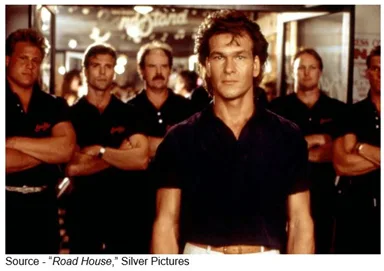
Or, if the two parties don’t think it’s important, they should remember what Dalton said to his crew, “Ask him to walk. Be nice. If he won’t walk, walk him. But be nice. If you can’t walk him, one of the others will help you, and you’ll both be nice. I want you to remember that it’s a job. It’s nothing personal.”
The crew behind the individual consumer is roughly 7B strong.
# # #